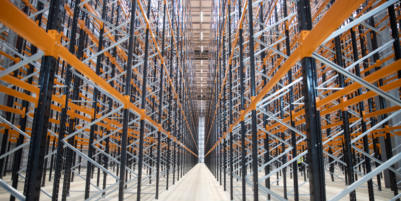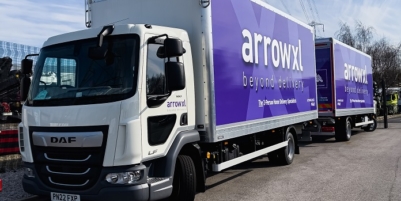-
ROSSLARE EUROPORT TARGETS HEALTH & SAFETY WITH CAMERA TELEMATICS PARTNERSHIP - 2 days ago
-
Landmark Study Reveals Wearable Robotics Significantly Boost Safety and Efficiency in Industrial Environments - July 24, 2024
-
Visku Tackle The Retail Seasonality Challenge One Pallet At A Time - July 22, 2024
-
KAMMAC AND BERGEN LOGISTICS STRENGTHEN FASHION & LIFESTYLE SERVICES IN THE UK - July 19, 2024
-
TENTBOX EXTENDS PARTNERSHIP WITH ARROWXL TO SUPPORT INCREASING DEMAND - July 17, 2024
-
The Perfume Shop improves customer journeys while driving profitability in partnership with Scurri - July 17, 2024
-
ZEROMISSION SECURES £2.3M ($3M) INVESTMENT TO ACCELERATE ELECTRIC FLEETS - July 16, 2024
-
BCMPA CELEBRATES SUCCESS OF 2024 CONFERENCE - July 15, 2024
-
Best of the Best: Jungheinrich Celebrates Triple International Award Win - July 12, 2024
-
GOPLASTICPALLETS.COM CALLS ON NEW CHANCELLOR RACHEL REEVES TO CONSIDER PLASTIC PACKAGING TAX REFORM - July 10, 2024
The latest workplace fatalities statistics reinforce the need for warehouses to adopt a common sense approach to impact protection systems to keep people safe and protected, says Paul Roehricht, UK strategic account manager, Brandsafe.
Workplace fatality figures published this summer by the Health & Safety Executive (HSE) report* that a total of 123 workers were killed in work-related accidents in Great Britain in 2021/22. While this is a slight decrease from the previous 2020/21 period, it’s clearly not acceptable that people continue to be injured, sometimes fatally, in the workplace.
One of the most hazardous UK workplace environments can be found in busy warehouse and logistics centres, so safety is always paramount if risk is to be mitigated. Indeed, it should be a given that keeping staff and visitors safe is among the single most important factor for those with responsibility for designing and building new facilities, or upgrading existing ones.
No one can ever afford to be complacent when it comes to workplace safety; especially when people are exposed 24/7 to myriad trip, fall and collision risks in the warehouse. Safety concerns and associated strategies must be a top priority. However, where do you start when working towards smarter, safer operations?
Common sense approach
Making safe decisions is never automated. Adopting a common sense approach is the best starting point in reducing potential accidents – it stresses the importance of critical safety equipment and systems as invaluable assets when integrated into a well-planned and executed H&S strategy.
For example, installing a visual routing system of delineators and safety chains in your warehouse, specifically designated for handling equipment such as forklifts and a separate one for pedestrian use, will instantly highlight if someone or something is out of place. If the scheme is well thought out and robust, anyone walking into a workplace should be able to see at a glance if there is a problem or hazard.
Adopting these comparatively simple yet effective measures can be relatively inexpensive and are easy-to-understand. Other technologies such as motion sensors, safety gates, guardrails, and other associated equipment can be integrated to augment any routing system that’s in place. A combination of effective safety systems and technology is essential for a safer workplace, especially when they’re designed to work together. Safety has to be entwined with equipment and design, and can lead to increased efficiencies for warehouse operatives.
It’s always going to be difficult to completely mitigate the dangers in the industrial workplace. However, you can minimise the potential of severe accidents occurring in warehouses with the aid of proactive measures such as safety barriers, bollards and traffic management systems.
Useful assets
Taking a pragmatic approach with the installation of safety barriers can pay dividends. They help to maintain awareness while offering a reassuring presence in an area where it is more than likely a moving vehicle will be present, and will encourage people in the warehouse to habitually check their surroundings. This means they can make sure they are not in the path of any forklifts or loading vehicles. The installation of well thought out and properly installed safety barriers, will be a useful asset to have in place when it comes to ensuring your workers remain alert and aware of their surroundings.
Safety barriers and protectors also contribute to reducing the severity of damage and repair costs to property, mechanical handling equipment such as forklifts and fleet vehicles in the event of a collision. It only takes a moment’s carelessness by a vehicle operator for an accident to occur, with all the associated ramifications. In the unfortunate event of a collision, a safety barrier can dramatically lower the risk of physical injury and expensive damage.
A warehouse barrier system should be designed to standout, easily seen by the eye, particularly in environments where light levels may be low or inconsistent. Racking corners, vulnerable entrances and exit points should also be considered for protection by bollards and safety posts as part of an effective impact protection strategy.
It’s not always a matter of deciding if your operation needs better safety training or improved impact protection equipment. It needs to operate at peak safety and efficiency, and taking a common sense approach when it comes to investing in equipment will reap rewards in terms of improvements in overall safety, staff satisfaction and productivity. It’s also important to recognise that each warehouse operation is different; it has its own particular set of hazards and risks. This must be reflected in the H&S strategy.
That means an impact protection strategy must be tailored to meet individual needs and warehouses of all sizes require a deal of complex safety planning and product support. You will need to think about your investment in terms of quality, reliability and performance. Consider also how your supplier can add value through tailored planning and consultancy services.
Part of IWS Group, Brandsafe specialises in bespoke designed impact protection systems and solutions for distribution centres, warehouses, and manufacturing and production facilities. The company’s product range combines the versatility and high visibility of polymer with the inherent strength and cost-effectiveness of steel. Its unparalleled project and consulting expertise offers an unrivalled solution for companies looking to put safety first. More about how to choose the right pedestrian safety system at

































